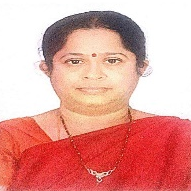International Journal of Information Technology and Computer Science (IJITCS)
IJITCS Vol. 14, No. 5, 8 Oct. 2022
Cover page and Table of Contents: PDF (size: 710KB)
Multi-stage Transfer Learning for Fake News Detection Using AWD-LSTM Network
Full Text (PDF, 710KB), PP.58-69
Views: 0 Downloads: 0
Author(s)
Index Terms
Fake news classification, Inductive transfer learning, Language model, Long short-term memory network, Multi stage transfer learning
Abstract
In the recent decades, the automatic veracity verification of rumors is essential, since online social media platforms allow users to post news item or express opinion towards a circulating piece of information without much restriction. The intention of fake news is to make the readers believe in inaccurate information, where the detection of fake news by using content is a difficult task. So, the auxiliary information: user profile, social engagement of the users, and other user’s comments are useful in the detection of fake news. In this manuscript, a novel multi-stage transfer learning approach is introduced for an effective fake news detection, where it utilizes user’s comments as auxiliary information to detect whether the given tweet is true or false. The stances of the response tweets contain opinions on news/rumors are often used for verifying the veracity of the circulating information. In order to devastate the effects of the specific rumors at the earliest, the multi-stage transfer learning approach automatically predict veracity of rumors jointly with the stances of their response tweets. The proposed multi-stage transfer learning is an inductive transfer learning variation that is used to forecast the stance of responses, then to identify fake news. The proposed model’s effectiveness is evaluated on the two-benchmark datasets: semEval-2017 task 8 and PHEME. The proposed model outperformed the existing approaches by obtaining a classification accuracy of 64.30% and 65.30%, an F-measure of 65.95% and 63.90% on semEval-2017 task 8, and PHEME on event-wise datasets.
Cite This Paper
Sirra Kanthi Kiran, M. Shashi, K. B. Madhuri, "Multi-stage Transfer Learning for Fake News Detection Using AWD-LSTM Network", International Journal of Information Technology and Computer Science(IJITCS), Vol.14, No.5, pp. 58-69, 2022. DOI:10.5815/ijitcs.2022.05.05
Reference
[1]A. Aker, A. Sliwa, F. Dalvi, and K. Bontcheva, “Rumour verification through recurring information and an inner-attention mechanism”, Online Social Networks and Media, vol.13, pp.100045, 2019.
[2]J.P. Singh, A. Kumar, N.P. Rana, and Y.K. Dwivedi, “Attention-based LSTM network for rumor veracity estimation of tweet”, Information Systems Frontiers, pp.1-16, 2020.
[3]A.R. Pathak, A. Mahajan, K. Singh, A. Patil, and A. Nair, “Analysis of techniques for rumor detection in social media”, Procedia Computer Science, vol.167, pp.2286-2296, 2020.
[4]M. Guo, Z. Xu, L. Liu, M. Guo, and Y. Zhang, “An Adaptive deep transfer learning model for rumor detection without sufficient identified rumors”, Mathematical Problems in Engineering, 2020.
[5]Q. Lv, Y. Wang, B. Zhang, and Q. Jin, “RV-ML: An effective rumor verification scheme based on multi-task learning model”, IEEE Communications Letters, vol.24, no.11, pp.2527-2531, 2020.
[6]N. Bai, Z. Wang, and F. Meng, “A Stochastic Attention CNN Model for Rumor Stance Classification”, IEEE Access, vol.8, pp.80771-80778, 2020.
[7]A. Kumar, “Rumour Stance Classification using A Hybrid of Capsule Network and Multi-Layer Perceptron”, Turkish Journal of Computer and Mathematics Education (TURCOMAT), vol.12, no.13, pp.4110-4120, 2021.
[8]R. kumari Mukiri, and B.V. Babu, “Prediction of rumour source identification through spam detection on social Networks-A survey”, Materials Today: Proceedings, 2021.
[9]A. Zubiaga, E. Kochkina, M. Liakata, R. Procter, M. Lukasik, K. Bontcheva, T. Cohn, and I. Augenstein, “Discourse-aware rumour stance classification in social media using sequential classifiers”, Information Processing & Management, vol.54, no.2, pp.273-290, 2018.
[10]A. Bondielli, and F. Marcelloni, “A survey on fake news and rumour detection techniques”, Information Sciences, vol.497, pp.38-55, 2019.
[11]J.C. Reis, A. Correia, F. Murai, A. Veloso, and F. Benevenuto, “Supervised learning for fake news detection”, IEEE Intelligent Systems, vol.34, no.2, pp.76-81, 2019.
[12]G. Gravanis, A. Vakali, K. Diamantaras, and P. Karadais, “Behind the cues: A benchmarking study for fake news detection”, Expert Systems with Applications, vol.128, pp.201-213, 2019.
[13]R.W. Filice, “Deep-learning language-modeling approach for automated, personalized, and iterative radiology-pathology correlation”, Journal of the American College of Radiology, vol.16, no.9, pp.1286-1291, 2019.
[14]Y. Sun, H. Qiu, Y. Zheng, Z. Wang, and C. Zhang, “SIFRank: a new baseline for unsupervised keyphrase extraction based on pre-trained language model”, IEEE Access, vol.8, pp.10896-10906, 2020.
[15]H. Jwa, D. Oh, K. Park, J.M. Kang, and H. Lim, “exbake: Automatic fake news detection model based on bidirectional encoder representations from transformers (Bert)”, Applied Sciences, vol.9, no.19, pp.4062, 2019.
[16]Stephen Merity, Nitish Shirish Keskar, Richard Socher, 2017. “Regularizing and Optimizing LSTM Language Models”, Cornell University, https://doi.org/10.48550/arXiv.1708.02182.
[17]H. Allcott, and M. Gentzkow, “Social media and fake news in the 2016 election”, Journal of economic perspectives, vol.31, no.2, pp.211-36, 2017.
[18]R.K. Kaliyar, A. Goswami, P. Narang, and S. Sinha, “FNDNet-a deep convolutional neural network for fake news detection”, Cognitive Systems Research, vol.61, pp.32-44, 2020.
[19]H. Yuan, J. Zheng, Q. Ye, Y. Qian, and Y. Zhang, “Improving fake news detection with domain-adversarial and graph-attention neural network”, Decision Support Systems, vol.151, pp.113633, 2021.
[20]J.A. Nasir, O.S. Khan, and I. Varlamis, “Fake news detection: A hybrid CNN-RNN based deep learning approach”, International Journal of Information Management Data Insights, vol.1, no.1, pp.100007, 2021.
[21]S.R. Sahoo, and B.B. Gupta, “Multiple features based approach for automatic fake news detection on social networks using deep learning”, Applied Soft Computing, vol.100, pp.106983, 2021.
[22]A. Choudhary, and A. Arora, “Linguistic Feature Based Learning Model for Fake News Detection and Classification”, Expert Systems with Applications, 2020.
[23]S. Sheikhi, “An effective fake news detection method using WOA-xgbTree algorithm and content-based features”, Applied Soft Computing, pp.107559, 2021.
[24]Y.F. Huang, and P.H. Chen, “Fake news detection using an ensemble learning model based on self-adaptive harmony search algorithms”, Expert Systems with Applications, vol.159, p.113584, 2020.
[25]F.A. Ozbay, and B. Alatas, “Fake news detection within online social media using supervised artificial intelligence algorithms”, Physica A: Statistical Mechanics and its Applications, vol.540, pp.123174, 2020.
[26]P. Bahad, P. Saxena, and R. Kamal, “Fake news detection using bi-directional LSTM-recurrent neural network”, Procedia Computer Science, vol.165, pp.74-82, 2019.
[27]A. Kumar, M.P.S. Bhatia, and S.R. Sangwan, “Rumour detection using deep learning and filter-wrapper feature selection in benchmark twitter dataset”, Multimedia Tools and Applications, pp.1-18, 2021.
[28]A. Zubiaga, M. Liakata, and R. Procter, “Exploiting context for rumour detection in social media”, In International Conference on Social Informatics, Springer, Cham, pp.109-123, 2017.
[29]E. Kochkina, M. Liakata, and I. Augenstein, “Turing at semeval-2017 task 8: Sequential approach to rumour stance classification with branch-LSTM”, arXiv preprint arXiv:1704.07221, 2017.
[30]Wang, Y., Wang, L., Yang, Y. and Zhang, Y., 2022. Detecting fake news by enhanced text representation with multi-EDU-structure awareness. arXiv preprint arXiv:2205.15139.
[31]Zhou, Y., Ying, Q., Qian, Z., Li, S. and Zhang, X., 2022. Multimodal Fake News Detection via CLIP-Guided Learning. arXiv preprint arXiv:2205.14304.
[32]Ali M. Meligy, Hani M. Ibrahim, Mohamed F. Torky, "Identity Verification Mechanism for Detecting Fake Profiles in Online Social Networks", International Journal of Computer Network and Information Security(IJCNIS), Vol.9, No.1, pp.31-39, 2017. DOI:10.5815/ijcnis.2017.01.04
[33]Shubham Bauskar, Vijay Badole, Prajal Jain, Meenu Chawla, "Natural Language Processing based Hybrid Model for Detecting Fake News Using Content-Based Features and Social Features", International Journal of Information Engineering and Electronic Business(IJIEEB), Vol.11, No.4, pp. 1-10, 2019. DOI:10.5815/ijieeb.2019.04.01
[34]Momina Shaheen, Shahid M. Awan, Nisar Hussain, Zaheer A. Gondal, "Sentiment Analysis on Mobile Phone Reviews Using Supervised Learning Techniques", International Journal of Modern Education and Computer Science(IJMECS), Vol.11, No.7, pp. 32-43, 2019. DOI:10.5815/ijmecs.2019.07.04
[35]Howard, J., & Ruder, S. (2018), “Universal language model fine-tuning for text classification”, Proceedings of the 56th Annual Meeting of the Association for Computational Linguistics (Volume 1: Long Papers), https://doi.org/10.18653/v1/p18-1031.
[36]A. Sherstinsky, “Fundamentals of recurrent neural network (RNN) and long short-term memory (LSTM) network”, Physica D: Nonlinear Phenomena, vol.404, pp.132306, 2020.
[37]M. Sundermeyer, R. Schlüter, and H. Ney, “LSTM neural networks for language modeling”, In Thirteenth annual conference of the international speech communication association, 2012.
[38]A. Zubiaga, M. Liakata, R. Procter, G. Wong Sak Hoi, and P. Tolmie, “Analysing how people orient to and spread rumours in social media by looking at conversational threads”, PloS one, vol.11, no.3, pp.e0150989, 2016.
[39]M. Askarizadeh, B.T. Ladani, and M.H. Manshaei, “An evolutionary game model for analysis of rumor propagation and control in social networks”, Physica A: statistical mechanics and its applications, vol.523, pp.21-39, 2019.


